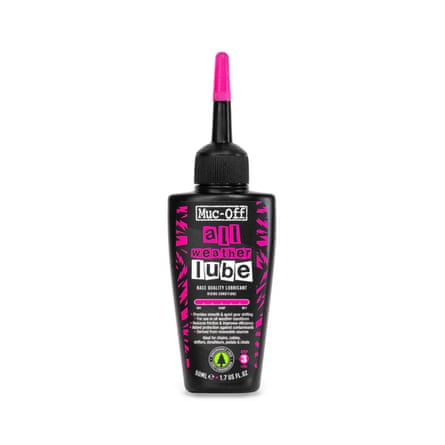
Cycling serves as an economical, readily available, and environmentally friendly method of transportation, often outpacing other options in urban settings and populated regions. However, the costs associated with buying and taking care of a bike are not insignificant. Acquiring one represents a considerable expenditure – even when utilizing schemes like the cycle to work initiative to ease the financial burden. Additionally, the expenses for new parts and upkeep can add up, particularly if your daily bike routine neglects regular attention. “Neglecting your bike maintenance will lead to costs over time,” states Lee Carter, chief mechanic at Bespoke Cycling.
Yet, you don’t need to be a bike maintenance expert to extend your bike’s lifespan and keep it operational. In fact, you can minimize visits to local bike repair shops with just a few practical strategies. Here, mechanics and experts offer their recommendations and knowledge regarding cleaning, vital maintenance tasks, and identifying when it’s necessary to seek professional help.
How to care for your bike
Wash it

Bicycles consist of numerous moving parts, and when dirt and debris from paths or streets infiltrate them, it can lead to increased wear with every movement. Consistent cleaning helps mitigate the impact, but it becomes especially essential during winter when road salt complicates matters.
“Few individuals clean their bikes often enough, but a warm soapy wash every two weeks could save hundreds,” remarks Carter. “Although it may not be the most sophisticated cleaning method, it’s accessible and effective” – he advises steering clear of chemicals like WD-40.
“Avoiding pressure washers is crucial – anything that can dislodge grease from moving components,” adds Ryan Elson, co-founder of BikeBook. “Manual cleaning is the most effective approach, and utilize a rag rather than letting it air dry, as that can foster rust. The goal is to keep everything clean and dry.”
Clean and lubricate your chain
A bicycle’s chain engages with every part of the transmission, positioning it at risk from all types of road spray, rain, and muck. Hence, maintaining its cleanliness is crucial to avoid accelerating the wear on costly elements like chain rings and cassettes.
“The two primary actions for chain maintenance are to wipe it down with a dry cloth to eliminate surface contaminants, and then gently apply a minimal amount of lubrication,” suggests Carter, while cautioning against excessive application. “Applying too much can be counterproductive – it captures significant amounts of debris, primarily road grit, which turns all that surplus grease into an abrasive slurry that greatly enhances wear.”
Mary Clark, a mechanic at Bee Pedal Ready, states: “Apply a single drop of oil onto each roller, allowing it to spread through the chain, then take a rag to wipe off the excess. If you wish to clean thoroughly first, a chain-cleaning tool or an old toothbrush with biodegradable degreasers can be used, but ensure it is clean and dry before adding lubrication.

All-weather lube, 50ml

Chain cleaner
Inflate your tyres
One of the most frequent mechanical problems faced by cyclists of all levels is the fearsome puncture. While you can’t do much when a sharp item perforates your tyre, you can minimize your risk of pinch flats – which happen when the inner tube gets squeezed between the rim and a blunt object like a curb or a pothole – by ensuring your tyres are properly inflated.
“On every tyre’s sidewall, you’ll find a maximum pressure rating, and a good rule of thumb is to aim for about 5PSI below that,” advises Carter. If you lack a pump, making that purchase is a solid choice. He recommends having an electric pocket pump for use at home and on-the-go, fitting easily into a pannier or pocket.
Elson suggests making it a habit to check your tyre pressure before every ride, as it only takes seconds. “If a bike sits unused for a while, air may escape from anywhere – whether it’s due to an old valve or a leak around the seal,” he explains.
In addition to routinely checking tyre pressure, Carter emphasizes the importance of inspecting the tyres themselves for wear signs – “such as splitting, cracking, or large cuts that compromise the tyre” – many bikes also feature wear indicators on the main tyre. “[Typically] two circles imprinted in the rubber; once they’re gone, it’s time to replace the tyre,” he mentions.

Digital pump
Maintain your brakes

Bicycle brakes come in two types – rim and disc – each of which necessitates its own maintenance routine. If you’re unsure which type your bike utilizes, rim brakes apply pressure to the wheel rim itself, while disc brakes feature rotors located at the centre of the wheels.
Rim brakes are typically found on older bicycles and, as Carter describes, are “quite visible”: “[With this style], you ought to check two aspects: the pad condition and the rim integrity. You can easily see if the pad material is worn – there’s usually a wear-line indicator.” When the grooves diminish and you’re left with a smooth surface, it’s time for replacement. “Additionally, if the rim is concave, it’s time for a new rim; if it fails, that can cause a significant issue.”
To extend the life of both types, keep the rim surface clean and replace the brake pads before they become excessively worn, as this can cause further damage to the rim, sometimes resulting in significant gouges.
Conversely, disc brakes should be left alone. “If they’re functioning well, don’t mess with them,” cautions Clark. One common problem arises when individuals attempt to clean or lubricate their bikes, inadvertently polluting the brakes. “When cleaning your bike, ensure no cleaning solutions or oils come into contact with the brake rotor or pads, and consider removing your wheel or covering the rotor. Contamination on the pads and rotor doesn’t wash away like it does with rubber pads and rim brakes – it gets absorbed.”
The immediate symptom of a contaminated brake is squeaking, but it can pose serious risks. “If they squeak and you can’t stop, then the brake is likely contaminated,” adds Clark. “Regardless of how forcefully you grip the brake, it won’t function because it’s slipping on the pads and rotor. You’ll need new pads and rotors to ensure it operates correctly.”
Protect it
The experts advise that the ideal location for a bike is indoors or in a dedicated bike shed, but if it must be placed outside, a protective cover is crucial.
“The worst mistake is leaving it out continuously and later expecting to return in summer for a service and ride away,” remarks Clark. “You’ll likely find it rusted and ruined, rendering it worthless.”
She suggests the Oxford waterproof cover – “it’s like a tarpaulin designed specifically for bicycles, and if it gets windy, just secure it with bungee cords.” However, Clark stresses the importance of ensuring the bike underneath is dry if you plan to leave it covered for an extended time. Otherwise, “covers can be harmful,” she highlights. “They can trap moisture underneath, leading to rust and corrosion.”

Bike cover
Install mudguards
“If you commute, put aside any apprehensions about fashion and invest in high-quality mudguards,” advises Clark. “The SKS models feature stainless steel fittings, have a long lifespan, spare parts are available, and they not only provide protection for you but also for your bike.”
That said, mudguards require attention, and Carter notes it’s wise to remove them during summer. “They can trap dirt and grime,” he points out. “Don’t simply leave them, as they can cause wear on the frame that leads to critical damage.” Early signs of this might be cosmetic, like minor paint chips, but over time, a mudguard may create deep gouges that compromise the structural integrity, especially on carbon fibre frames.

Mudguards
Secure it

The most effective defense is a solid offense, and ensuring your bike remains in your possession for years involves proper security measures. The choice of the right bike lock will vary based on your budget, security needs, and considerations such as weight, but Elson suggests opting for one with a warranty. “It’s about seeking brands that demonstrate their reliability, which they usually indicate on the lock itself. Look for a robust option, but be mindful not to lug around a 10kg lock in your bag, so it’s a matter of balance. Kryptonite options are excellent and have proven effective against even angle grinders.”
For further information, consult the Filter’s guide on the best bike locks
Prevent overtightening bolts
While these are foundational tips, countless YouTube tutorials exist for every kind of bike maintenance task, from fixing a flat to disassembling and performing a complete service. However, the more you experiment, the more specialized your at-home toolkit needs will become.
One major problem novice home mechanics encounter is overtightening bolts. Using excessive force can strip the heads, making it challenging to tighten or loosen, and at worst, it can harm and fracture components, especially with carbon fiber parts.
“If you have a quality bike with torque settings, purchasing a torque wrench is essential,” advises Clark. “We use a Park Tool one, but they’re sometimes available during Bike Week at Aldi. Make sure it’s bike-specific; car tools have much higher torque settings due to larger bolts.”

Adjustable torque driver

